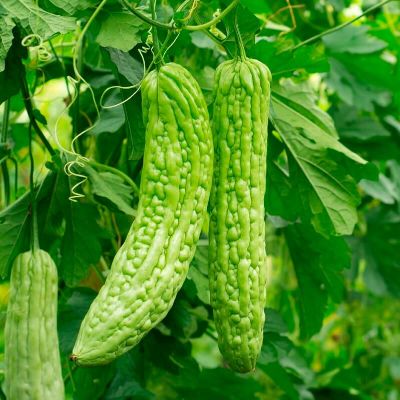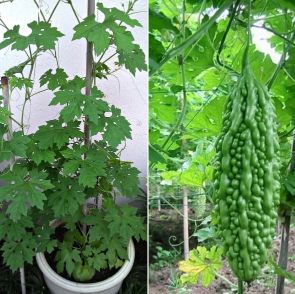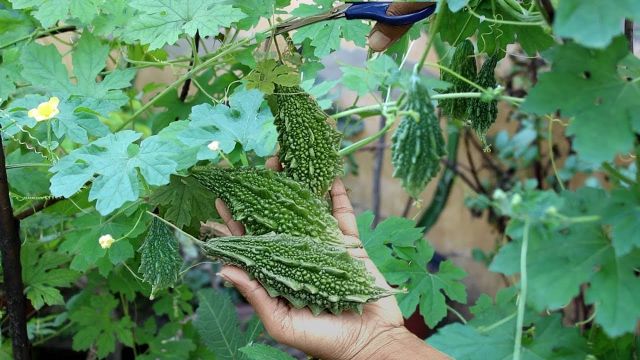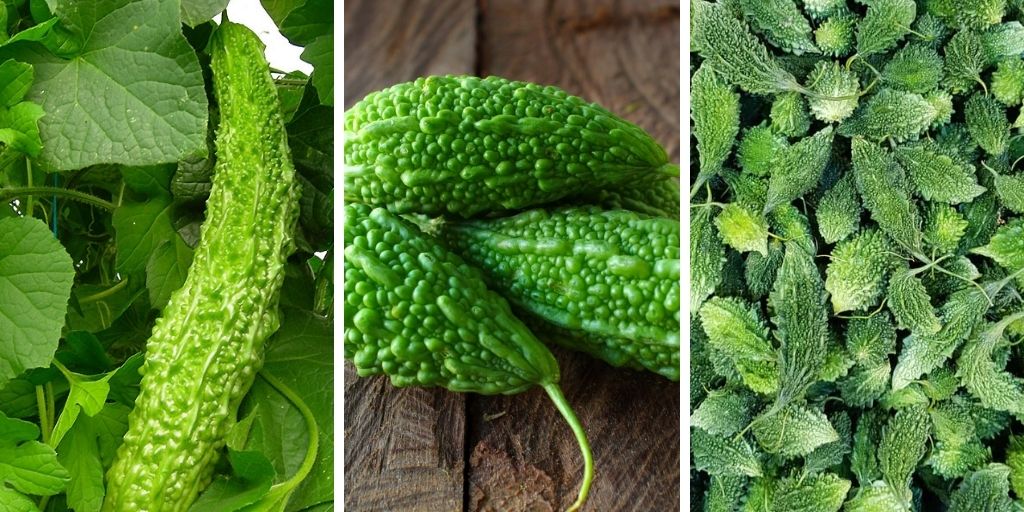Bitter Melon is a popular veggie in Asian countries. It has a bitter and mouth-puckering acquired taste and it is usually served with meat and soup. In Asian, bitter melon are popular because it is believed they’re rich in nutrients and healthy.
These trees love warmth and they naturally grow in tropical and subtropical areas. Therefore, it is best to grow it in regions where the temperature degrees range between 75 and 80°F (24-31°C). They should be planted in spring or summer as they will need at least 4 months of warmth to develop strong enough roots to survive summer.
There are two kinds of bitter melon. The first originates from India and has a small size and spiny skin. The second comes from China. It is larger than the Indian type and has a milder taste.

1. Preparing The Seeds
You can get ready for sow seeds online or from your local nursery store or from ripe yellow fruits. The seeds of ripe fruits germinate faster than the ones you find in nurseries as they’re younger and stronger.
You can plant the seeds immediately after you get them or propagate them to accelerate the germination. This is recommended when the growth conditions related to the climate are not typical.
To propagate the seeds, rub them slightly and carefully seeds from one side without doing any damage then soak them for 24 hours in water.
2. Soil Requirements To Grow Bitter Melons
Bitter melons can be grown in any quality soil and they tolerate a wide range of poor soil qualities. However, these plants do not like moisture and the best type of soil would be slightly acidic to the slightly alkaline soil that will allow drainage. But, sandy loam soil that is rich in organic matter is will do the job.
3. Choosing A Spot
Since these plants come from tropical areas, they require daily sunlight exposure. Sun light will improve the yield of your plants. Therefore, pick a warm, sunny location where the trees will receive at least 6 hours of day light.
4. Planting
Move the soil in site you’re planting and dig a whole of half-inch deep (1.25 cm) for each seed you’re sowing. There should be a distance of at least 12 inches (30 cm) apart between the seeds. The germination usually takes place within two weeks.
5. Watering and Feeding
These plants can endure drought and they do need frequent watering. You can avoid watering them regularly in winter and even not water them for a short period of time. In summer, water them regularly once a week carefully.
Bitter Melons are not heavy feeders but fertilization is recommended to improve production. After planting, you can apply a slow-release complete fertilizer in the soil such as 5-10-10. Then, once a year add some compost or well-rotted aged manure and regular inputs of organic matter to the soil. This will provide your plants with enough nutrients to produce quality fruits.
6. Supporting And Trellising
The stems of bitter melons are weak and they cannot support the perky and fast growth of this plant therefore you will need to support a couple of weeks after planting. At first, you can use a stick but then you will to arrange trellising such as pergolas, arches, or mini arbors.
Bitter Melons should not be grown on the ground to avoid pests and diseases. Besides, growing them vertically is the best way to ameliorate the quality of fruits and increase the quantity production.

7. Caring For Bitter Melons
Caring for better melons means performing the below activities on regular basis to control, protect and help your plants grow:
- Pruning: Bitter Melons produce several side branches that will consume a part of the energy of your plants. When the branches reach the top of the trellis or the support, pinch off the top of each branch and remove the branches that are not carrying flowers. This enhances the yield of the trees as the plants will direct energy to fruits and flowers.
- Pests and Diseases: The most pests’ attacks come cucumber beetles’ aphids and spider mites. These may cause vines to collapse as carry bacterial wilt disease. Unfortunately, the cines will not recover if they are infected therefore keep an eye on your trees and if you spot any pests, spray with adult beetles with rotenone or a pyrethrum-based insecticide. As per diseases, avoid growing bitter melons on the ground and you will avoid many of them.
8. Harvesting
Bitter Melons are ready to harvest after 4 months from planting. After 2 to 3 months, the fruits will become green and pale and has a size of 4 to 6 inches –10 to 15 CM). After a month, they will ripe and become ready for harvest. It is recommended to pick the fruits with your hand rather than cut them with scissors.

If you still need more information on how to grow bitter melons, please leave your questions in the comments below.

